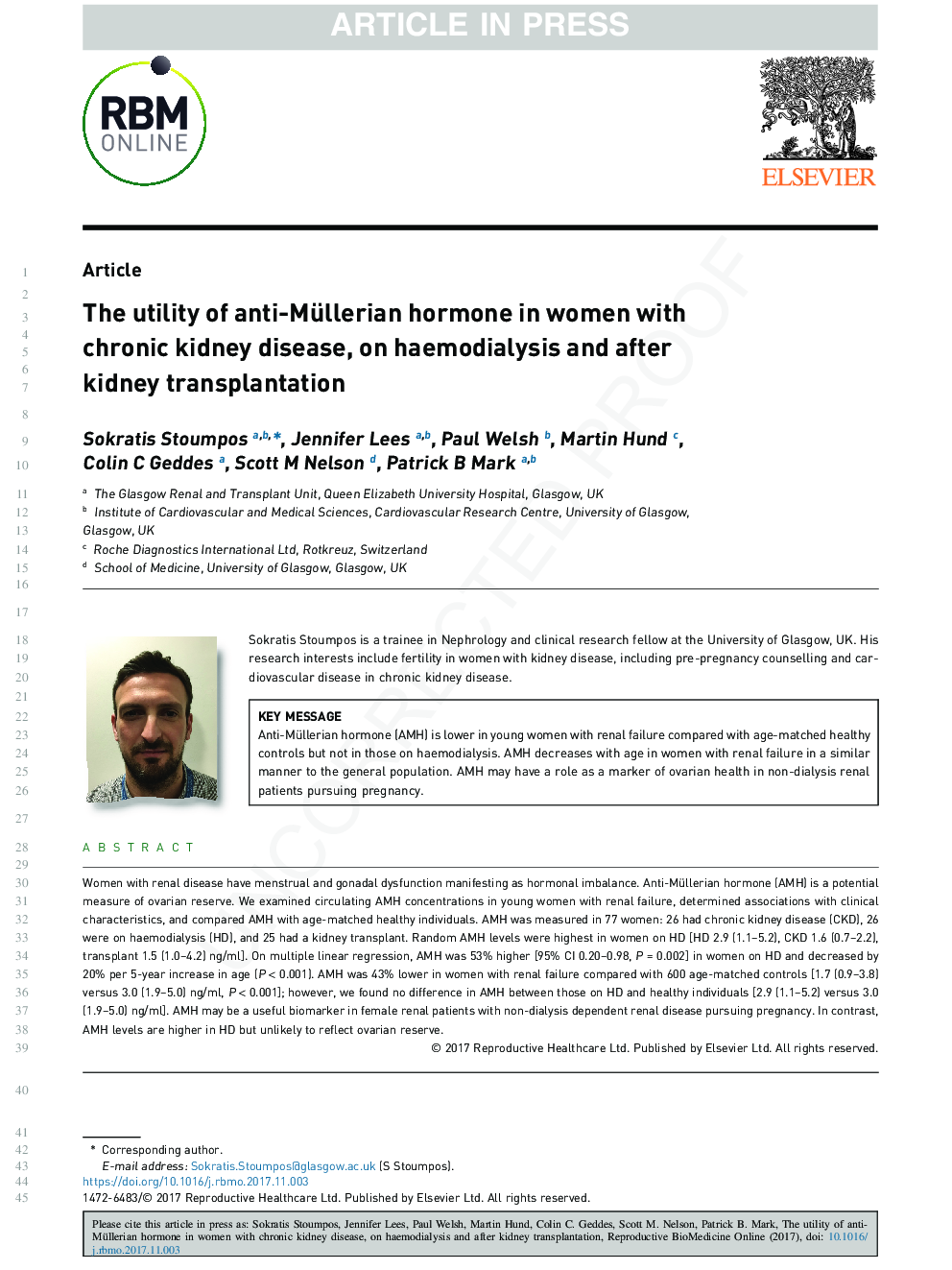| Article ID | Journal | Published Year | Pages | File Type |
|---|---|---|---|---|
| 8783938 | Reproductive BioMedicine Online | 2018 | 8 Pages |
Abstract
Women with renal disease have menstrual and gonadal dysfunction manifesting as hormonal imbalance. Anti-Müllerian hormone (AMH) is a potential measure of ovarian reserve. We examined circulating AMH concentrations in young women with renal failure, determined associations with clinical characteristics, and compared AMH with age-matched healthy individuals. AMH was measured in 77 women: 26 had chronic kidney disease (CKD), 26 were on haemodialysis (HD), and 25 had a kidney transplant. Random AMH levels were highest in women on HD [HD 2.9 (1.1-5.2), CKD 1.6 (0.7-2.2), transplant 1.5 (1.0-4.2) ng/ml]. On multiple linear regression, AMH was 53% higher [95% CI 0.20-0.98, P = 0.002] in women on HD and decreased by 20% per 5-year increase in age (P < 0.001). AMH was 43% lower in women with renal failure compared with 600 age-matched controls [1.7 (0.9-3.8) versus 3.0 (1.9-5.0) ng/ml, P < 0.001]; however, we found no difference in AMH between those on HD and healthy individuals [2.9 (1.1-5.2) versus 3.0 (1.9-5.0) ng/ml]. AMH may be a useful biomarker in female renal patients with non-dialysis dependent renal disease pursuing pregnancy. In contrast, AMH levels are higher in HD but unlikely to reflect ovarian reserve.
Related Topics
Health Sciences
Medicine and Dentistry
Obstetrics, Gynecology and Women's Health
Authors
Sokratis Stoumpos, Jennifer Lees, Paul Welsh, Martin Hund, Colin C. Geddes, Scott M. Nelson, Patrick B. Mark,
